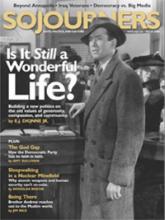One day when my oldest son was about 12 years old, I put on my best Pa Walton impression and said, “Boy, there are two things you need to know in the big, ugly world out there. One—it’s all about those standardized tests that come down from New Jersey. And two—for any adult with a job, real life is exactly like “Dilbert.”
For daily readers of The New York Times (which has no comics) , I’ll note that “Dilbert,” named for its pear-shaped protagonist, is set in the engineering department of some sort of computer company. It features the conventional comic strip gimmick of talking animals. For instance, a cat with glasses is the human resources director. But it also depicts the absurdity of life in any bureaucracy—the meetings for their own sake, the pointless training sessions, the petty corruption and pettier tyranny, and the barely-suppressed state of impotent rage that is the lot of the cubicle drone. In short, “Dilbert” may be the great American novel of white-collar life in the information age.
I’ve been a daily reader of the strip, created by Scott Adams, for as long as it’s been around. But it took a while for me to realize how fully it expresses the spirit of our age. From my earliest reading, I had a fondness for Wally, the character who sometimes goes around with a tank of coffee strapped to his back, and who uttered the timeless proverb, “Sadness is just another word for not enough coffee.” But when I started reading “Dilbert,” I was a freelancer, juggling as many part-time and contract jobs as I could scrounge, along with the care of small children. If I had really identified with a comic strip character back then, it probably would have been Lois in “Hi and Lois,” or the father in “Family Circus,” trying to tend his art with a small army of short people running around his knees.
Read the Full Article
